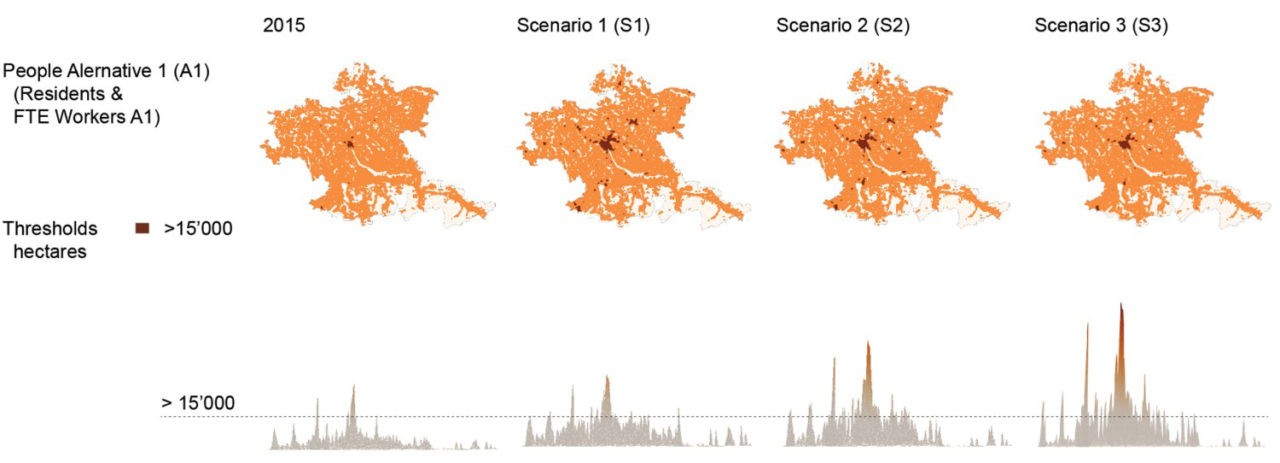
Sibylle Wälty
2021
Full text
Land use regulations in Switzerland do not meet the requirements of the spatial planning act (SPA) in their guidance for parsimonious land use. If parsimonious land use is to be achieved, urban economic theories and price-based regulations must be leveraged to determine the intensity and balance of land use.
Therefore, an urban information system to project and guide for parsimonious land use was developed. The GIS spatial analysis instrument presented in this paper is intended as a decision-making aid in the reform of the land use regulations, in particular metropolitan, cantonal and regional structure plans and municipal land use plans. By intensifying and better balancing land use at locations adequately accessed by public transport, land can be used parsimoniously. However, the projection results are not a self-fulfilling prophecy. Therefore, to guide for parsimonious land use regulations need to change from normative, static and exclusionary to context-dependent, conditional, dynamic and inclusionary ones. The next step is to develop a system of fees and codes to internalize negative externalities of building and transport and to collect public revenue from economic and agglomeration rents.